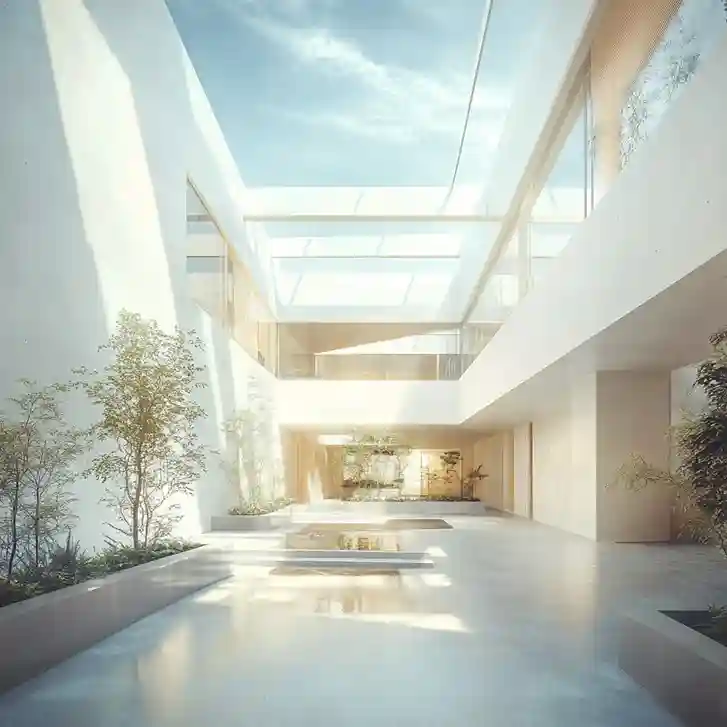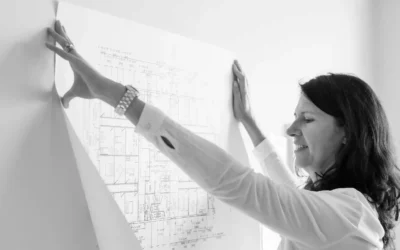Natural light has a significant impact on a space’s appearance, use, and overall well-being, making it an essential component of architectural design. An architecture firm in Dubai, where sunshine is plentiful, may use this resource to create structures that are inspiring, hospitable, and energy-efficient. The numerous advantages of natural light and practical ways to include it in architecture projects are discussed in this blog.
Benefits of Natural Light in Architecture
Enhances Aesthetic Appeal
Natural light accentuates architectural features, textures, and materials, creating dynamic spaces that change throughout the day. A thoughtful use of sunlight can highlight architectural details and provide character and depth to interior spaces.
Boosts Mood and Well-Being
Research has shown that being exposed to natural light enhances mood, reduces stress, and increases productivity. In residential and business environments, well-lit spaces are more attractive and practical as they promote interaction and positivity.
Improves Energy Efficiency
Reduced use of artificial lighting can result in a considerable reduction in energy usage. Incorporating natural light into designs not only helps an architecture firm in Dubai accomplish environmental goals, but it also lowers operating expenses for clients.
Promotes Health
Circadian rhythms are regulated by natural light, which improves sleep and general wellness. Additionally, it offers vital vitamin D, which enhances residents’ physical health.
Increases Property Value
Buildings with ample natural light are often more attractive to buyers and tenants, leading to higher property values. This benefit is especially important in markets for real estate that are very competitive, like Dubai.
Design Techniques to Maximize Natural Light
Strategic Placement of Windows
The size, shape, and placement of windows play a critical role in capturing sunlight. Skylights, clerestory windows, and floor-to-ceiling windows can let in natural light while offering views of the outside world.
Floor-to-Ceiling Windows: Ideal for living rooms and offices, these windows offer unobstructed views and maximize light entry.
Clerestory Windows: Positioned high on walls, these windows illuminate interiors without compromising privacy.
Skylights and Roof Glazing: These components are ideal for upper floors because they provide light where conventional windows cannot.
Open Floor Plans
Open layouts facilitate the flow of natural light throughout a building. Minimizing walls and barriers allows sunlight to reach deeper into interiors, creating brighter and more connected spaces.
Use of Reflective Surfaces
To enhance natural light, use reflective surfaces like polished floors, mirrors, and glass. By reflecting light around a space, these surfaces increase the light’s intensity and reach.
Light-Colored Interiors
Light-colored walls, ceilings, and furniture reflect sunlight, making spaces appear larger and brighter. In particular, neutral and pastel hues work well to improve light dispersion.
Shading Devices
Controlling heat and glare is essential when utilizing natural light, especially in locations such as Dubai. Examples of shading devices that can manage sunlight exposure for comfort and energy efficiency include overhangs, brise-soleil, and louvers.
Courtyards and Atriums
Atriums and courtyards provide light into a building’s center. They design vibrant, focal areas that are both useful and aesthetically pleasing. For example, a courtyard in a residential house in Dubai may serve as a natural light well, bringing light into the rooms around it.
Glass Partitions and Doors
Light can move freely across rooms when solid walls are replaced with glass doors or partitions. This method ensures a light and spacious environment while preserving privacy.
Orientation and Building Placement
The orientation of a building significantly affects its ability to capture natural light. While east-facing windows in Dubai catch the early sun, north-facing windows can offer steady light without being overly hot.
Challenges and Solutions
Managing Heat Gain
Excessive sunlight can increase indoor temperatures, leading to discomfort and higher cooling costs. To address this:
Use low-emissivity (low-E) glass to reduce heat transfer.
Incorporate elements of shading and thermal insulation.
Management of Glare
Glare can diminish visual ease and efficiency. Among the solutions are:
colored or opaque glass to diffuse light.
drapes or shades that can be modified for adaptability.
Confidentiality Concerns
Large windows can put privacy at risk. To lessen this:
Make use of window films or frosted glass.
Install vertical gardens or screens outside windows.
Iconic Examples in Dubai
Dubai is home to architectural marvels that masterfully incorporate natural light:
Burj Khalifa
The world’s tallest building employs advanced glazing systems and strategically placed windows to maximize natural light while minimizing heat gain.
The Dubai Frame
This well-known structure utilizes its large glass exteriors to create luminous interior spaces with stunning views of the city.
Sustainable City
This residential community emphasizes natural light in its eco-friendly designs, utilizing solar shading and reflective materials to enhance energy efficiency.
Conclusion
Using natural light is crucial for sustainable and healthful building techniques, even beyond aesthetic reasons. With careful use of sunshine, architects may design environments that are serene, uplifting, and energy-efficient. To make your idea of adding natural light to your space a reality, collaborate with an architectural firm in Dubai.




